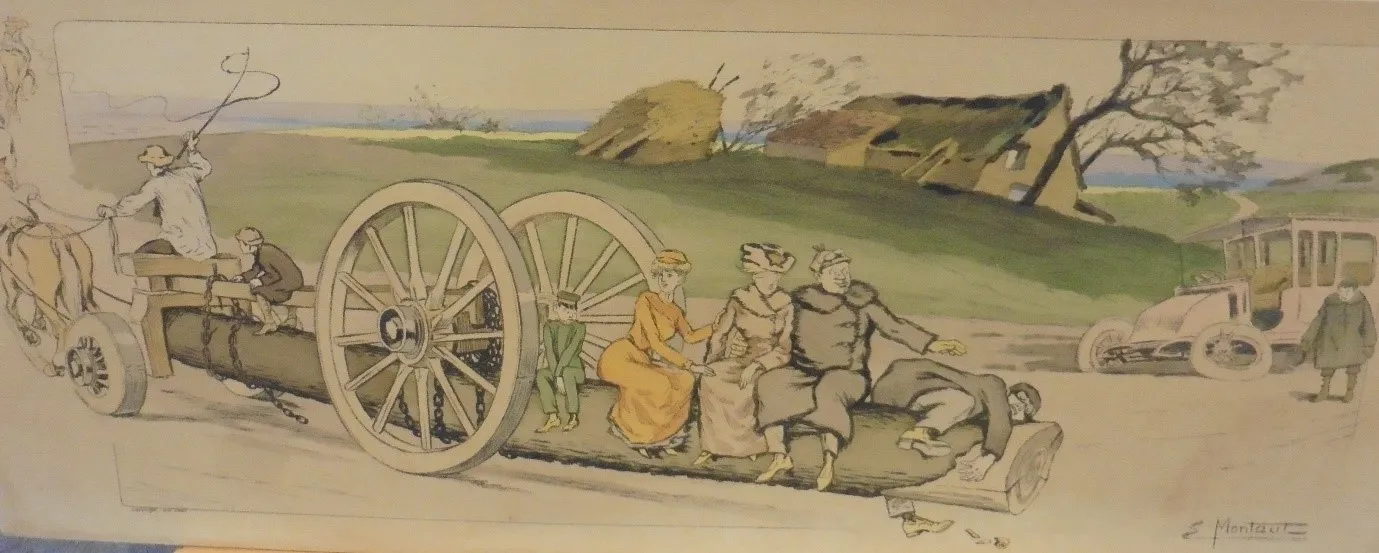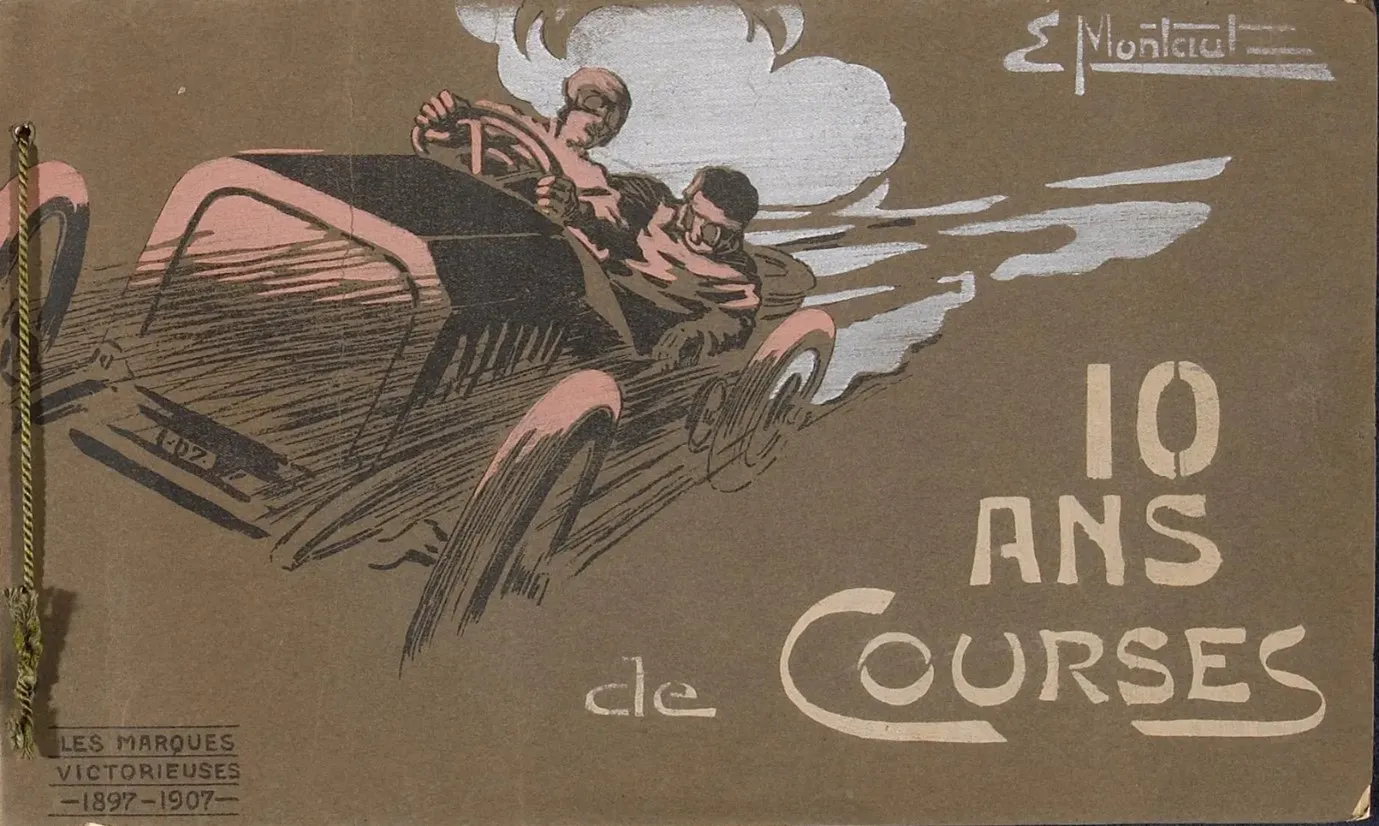Welcome to Mabileau & Co.
Welcome to this inaugural ‘blog’ from Mabileau & Co. Cheltenham. Let’s firstly address the name! (no, it’s not Malibu – That’s a sort of coconutty flavoured rum!) So why the unusual name for an art gallery?
The name is an homage to Mabileau et Cie. Paris (Which is why the Cheltenham bit is important). Let’s go back to the heady days of the Belle Epoque, when art was the rock n’ roll of the day and the acknowledged artists Toulouse Lautrec and Picasso were amongst the chroniclers of the times. Mabileau et Cie. Paris were master lithographers who were able to replicate masterpieces and make them available to the masses. Lithography had been around for a while by the early 1900’s but was a very skilled and difficult process. Developments of the technique and increasing demand saw great advances during the Belle Epoque and this became the great art revolution.
The Belle Epoque was also the dawn of another revolution – This was the refinement of the horseless carriage and the start of the Motoring age. In collaboration with the artist Ernest Montaut, Mabileau et Cie became the foremost producers of early motoring art and accidentally became the inspiration for a Cheltenham petrolhead’s love of early motoring art – Hence the name Mabileau and Co. Cheltenham became the obvious choice when the collection evolved into a gallery.
So…now we’ve gotten that cleared up, it’s time to talk about motoring art. The main purpose of this ‘blog’ is to introduce the great motoring artists of the 20th century, their works, influences and legacies. Beginning at the very beginning as someone once said, let's start with the ‘father or motoring art’ Ernest Montaut and ‘The Mabileau set’.
Ernest Montaut & Mabileau Born in the latter part of the 19th Century (1879) Ernest Montaut was clearly a talented artist and we can also assume that he had a keen interest in the technical advances of the age as he managed to combine two of the innovations that appeal to us here at the Mabileau (Cheltenham) – Lithography & Motoring! Most of his earlier work concentrated on the dis-harmony between the traditional horsedrawn era and the new mechanical age, and interestingly he took great inspiration from the ‘inconvenience’ of new-fangled machinery (breakdowns etc.) and the ‘reliability’ of the equine mode of transport! In this image – which in the absence of a title we have dubbed ‘Log’ he highlights the frustration of the ‘motorist’ and the need for his passengers to hitch a ride on the horse-drawn ‘log carrier’!

Montaut further explored this theme in a series of 4 ‘cartoons’ titled Les Pannes (The breakdowns) In which similarly inconvenienced motorists are seen suffering breakdowns in unfortunate circumstances. We can already identify ‘Montaut trademarks’ in these early works, most noticeably the use of the ‘broken border’ where he has taken the image through the border of the work, seen here as the horses making their way off the edge of the picture.
These early works were completed around 1903 – certainly this is the date we’re finding on the ‘Les Pannes’ series (Montaut would have been aged 24) and it is obvious that he recognised the way the wind was blowing as he soon began concentrating on the sporting side of motoring, we have to assume that he was attracting commercial work from the growing motoring and accessories trade – so maybe his ‘clients’ would not have been as amused by the breakdown scenes as the general public!
This began the era of what we now consider to be the classic Montaut image – scenes from the great dawn of motor racing – his subjects now became the early motor cars from the rapidly growing French motoring industry, staring in iconic races such as The Targa Florio and the Mille Miglia with a few of the Gordon Bennett series featuring. Before photography became a practical alternative many of the pictorial images, we have of early motor racing owe a debt to Ernest Montaut. Having established himself as an artist of renown Montaut now looked towards the commercialisation of his talent – If he could replicate his work multiple times he could increase his income incrementally, this is where the partnership with Mabileau et Cie, Paris takes centre stage.
Very little is known about the Parisian Mabileau other than the high numerical output of images, however Montaut almost certainly had a commercial interest in the company as many early editions are copyrighted as ‘MM Paris’ which we can reasonably assume denotes ‘Mabileau Montaut’ or vice versa. In common with many early Litho’ houses the company took a production line approach to work, we know that although Montaut was responsible for the original lithographic prints, the colour was added by a variety of studio colourists. There is a certain amount of debate about the techniques used in colouring and popular opinion is that this was done by a pochoir process (French for stencil), however close observation of Mabileau prints would indicate that many were produced with freehand colouring, so the jury is out on this matter!
Ever the astute businessman Ernest recognised the commercial value of his work, he produced what is now considered a catalogue of prints – 10 Ans de Course 1897 – 1907 which showcased available prints. Antique copies of this book can still be found for a high price; however, it is still worth getting a copy if you can!

Ernest Montaut married Margueritte Millet (1883-1949) at some point in the early 1900’s and she soon joined him in the print producing venture – Margueritte was an accomplished artist in her own right and soon became part of the Mabileau ‘team’, one can imagine a flourishing husband & wife business living and working in Paris, producing many artistic records of the rapidly expanding ‘Golden age of motoring’ Sadly, Ernest died of appendicitis in 1909. This may well have put an end to the business, however around this time prints started to appear signed ‘Gamy’ – which is an anagram of Margueritte’s ‘nickname’ Magy, so it is reasonable to assume that Gamy is in fact Margueritte Montaut. One of the prints of the London-Manchester air race is signed E&M Montaut, which may be an indicator of a work started by Ernest, then for expediency finished by ‘Gamy’ after his untimely death.
After 1910 we start to see litho’s with the names Roowy, Campion, Nevill & Adelmo being offered by Mabileau et Cie, these were ‘studio artists’ and it is likely that Gamy employed them to help to keep up with ‘stock’!
Gamy seemed to prefer the growth of aviation rather than motoring, and although there exists a quantity of motoring lithographs bearing the signature Gamy, it is far more likely that one will find early aviation images from Mabileau et Cie with the ‘Gamy’ signature.
The subjects and techniques pioneered by Montaut & the Mabileau ‘set’ will be the subject of future ‘blogs’, so please keep re-visiting as the story grows. I hope that you have enjoyed this initial attempt – please visit Mabileau & Company Cheltenham and see some of the great works of the dawn of motoring art hanging on the walls!
chevron_backwardGo back